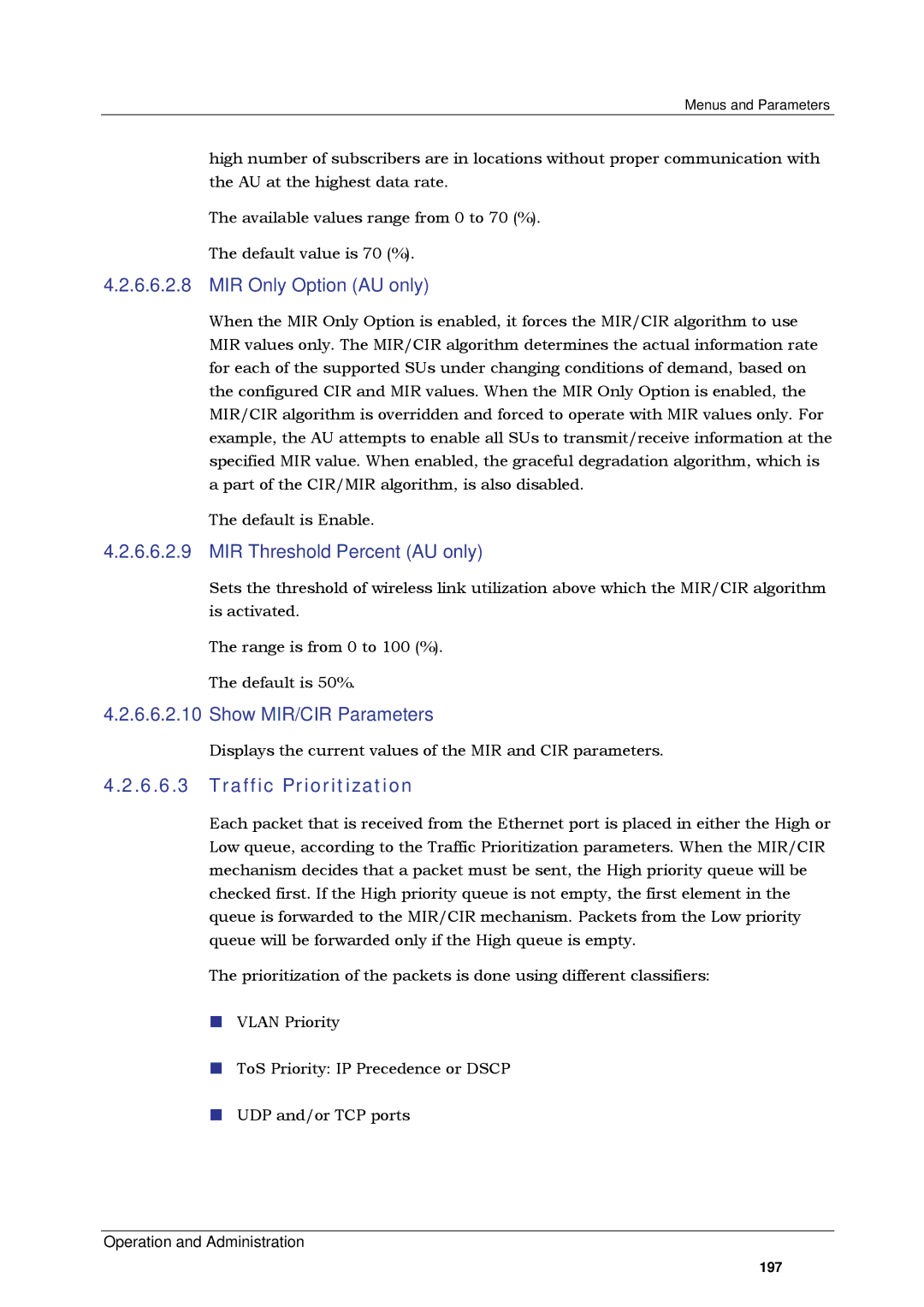
Menus and Parameters
high number of subscribers are in locations without proper communication with the AU at the highest data rate.
The available values range from 0 to 70 (%).
The default value is 70 (%).
4.2.6.6.2.8 MIR Only Option (AU only)
When the MIR Only Option is enabled, it forces the MIR/CIR algorithm to use MIR values only. The MIR/CIR algorithm determines the actual information rate for each of the supported SUs under changing conditions of demand, based on the configured CIR and MIR values. When the MIR Only Option is enabled, the MIR/CIR algorithm is overridden and forced to operate with MIR values only. For example, the AU attempts to enable all SUs to transmit/receive information at the specified MIR value. When enabled, the graceful degradation algorithm, which is a part of the CIR/MIR algorithm, is also disabled.
The default is Enable.
4.2.6.6.2.9 MIR Threshold Percent (AU only)
Sets the threshold of wireless link utilization above which the MIR/CIR algorithm is activated.
The range is from 0 to 100 (%).
The default is 50%.
4.2.6.6.2.10 Show MIR/CIR Parameters
Displays the current values of the MIR and CIR parameters.
4.2.6.6.3Traffic Prioritization
Each packet that is received from the Ethernet port is placed in either the High or Low queue, according to the Traffic Prioritization parameters. When the MIR/CIR mechanism decides that a packet must be sent, the High priority queue will be checked first. If the High priority queue is not empty, the first element in the queue is forwarded to the MIR/CIR mechanism. Packets from the Low priority queue will be forwarded only if the High queue is empty.
The prioritization of the packets is done using different classifiers:
VLAN Priority
ToS Priority: IP Precedence or DSCP
UDP and/or TCP ports
Operation and Administration
197
